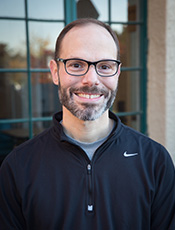By Ramsey Hachem, M.D.
Washington University School of Medicine Barnes-Jewish Hospital
Division of Pulmonary and Critical Care
December, 2008
Dr. James Hardy performed the first human lung transplant in 1963 in Jackson Mississippi. Before proceeding with human lung transplantation, Dr. Hardy and his team had performed approximately 400 transplant experiments on dogs. However, while the transplanted lung seemed to function reasonably well early after transplantation, the dogs ultimately rejected the lungs within a month despite various immunosuppressants available at the time. Nonetheless, the team believed that “cautious clinical application of the procedure” in humans was acceptable, but decided that the initial recipient must have a fatal underlying disease to justify undertaking the unknown risks. After evaluating many candidates over a year, the team identified a patient who met their selection criteria. The patient was a 58-year old man who had lung cancer involving the left main airway and obstructing distal airways resulting in lung collapse and recurrent pneumonia. While the patient was serving a life sentence in prison, Dr. Hardy outlined the potential complications and risks with him in detail and he agreed to proceed.
The eventual donor had been brought to the emergency department because of a massive heart attack resulting in heart failure and shock. Shortly after arrival, he arrested and when it became apparent that successful resuscitation was not possible, his family was consented for organ donation. The donor was taken to the operating room for retrieval, and the recipient was prepared for transplantation in an adjacent operating room almost simultaneously. Both operations were remarkably uncomplicated and the recipient began breathing spontaneously. Indeed, the arterial oxygen saturation improved from 87% before to 98% immediately after the transplant. Chest x-rays and an angiogram confirmed that the transplanted lung was well ventilated and perfused. The immunosuppressive regimen consisted of azathioprine, prednisone, and cobalt radiation to the mediastinum and thymus. Notably, cyclosporine and tacrolimus, which are the cornerstones of immunosuppression in modern transplantation, had not yet been discovered.
After the initial success, the patient developed progressive kidney failure and became increasingly malnourished. He was started on peritoneal dialysis but died eighteen days after the transplant. An autopsy showed no evidence of rejection. Despite the ultimate outcome, this case encouraged the field of lung transplantation by demonstrating that the transplanted lung could function physiologically and rejection could be averted with the available immunosuppressants, at least for a short time. However, over the next ten years only 36 lung transplants were performed worldwide and the majority of recipients died within a few days; two recipients survived more than a month. The leading cause of death, and the primary obstacle to better outcomes was poor healing of the airway anastomosis, which sometimes eroded into adjacent vessels and led to massive bleeding into the lung.
In 1981, Dr. Norman Shumway and his colleagues at Stanford University performed three heart-lung transplants. Two of the three transplants were successful and the recipients were still alive when the team reported their results in 1982; one recipient died four days after the operation because of multi-organ failure. Dr. Shumway attributed the success to refining surgical techniques through primate experimentation and the advent of cyclosporine, which reduced the necessary steroid doses thus mitigating their negative impact on anastomotic site healing. In 1983, the Toronto Lung Transplant Group performed the first successful lung transplant. The recipient was a 58-year old man with pulmonary fibrosis. The operation and early post-operative course was fairly uncomplicated. He was treated with cyclosporine and azathioprine for immunosuppression and initially did not receive steroids to minimize the risk of airway anastomotic dehiscence. However, in the first two weeks he developed two episodes of rejection that resulted in respiratory failure and required steroids and lymphocyte depletion. The recipient ultimately recovered and was discharged home. When the group reported their experience in 1986, he was alive and leading a normal lifestyle. This success was remarkably encouraging for pulmonary physicians and patients with lung disease, but the early rejection was an ominous prediction of future obstacles and limitations.
Over the ensuing decade, the number of lung transplants performed worldwide increased rapidly. In 1987, approximately 45 transplants were performed, and by 1990, over 400 were performed worldwide. Activity continued to increase rapidly until the mid 1990’s when the number of annual transplants plateaued at approximately 1400. In recent years, the number of transplants has increased to approximately 2200 per year. Over the years, outcomes have improved as surgical techniques, donor and recipient selection, and medical therapy have been refined. In fact, the median survival of patients transplanted between 2000 and 2006 was 5.5 years compared to 4 years for those transplanted between 1988 and 1994. However, outcomes in the modern era remain far from ideal as chronic rejection has emerged as the leading obstacle to better long-term survival. Likewise, the shortage of suitable donor organs remains the primary limitation to the more widespread use of lung transplantation. Nonetheless, as we look to the future and consider the challenges ahead, reflecting on the history of our field provides insight and hope.

